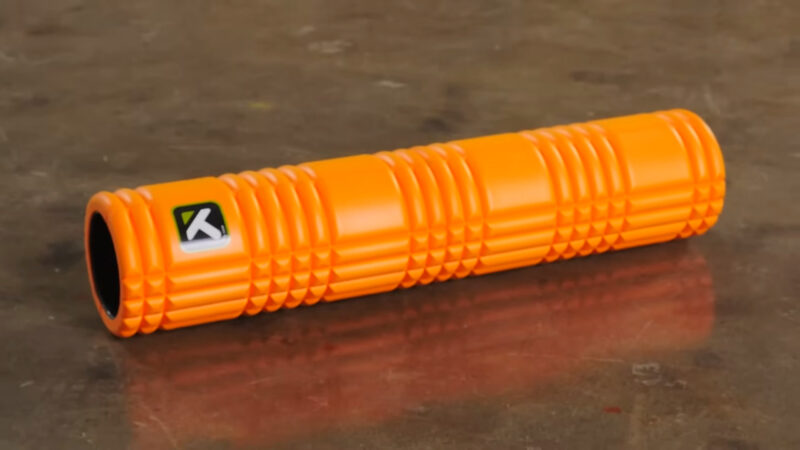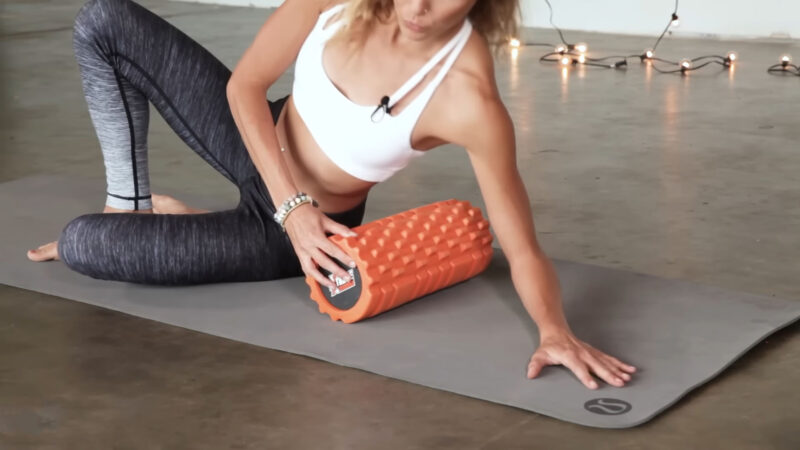All of us sometimes have been dealing with some back pain lately. Even if by some miracle you didn’t, it is useful to learn more about it. That’s why I’m gonna tell you about Foam rolling for back pain—how using a foam roller on your back muscles could help give you relief! Foam rolling is where you use a soft, round cylinder made of foam to roll different parts of your body.
I know it might sound weird, but just hear me out! Rolling on the foam puts pressure on your tight and sore muscles. This helps loosen them up so they aren’t as stiff. It’s kinda like getting a massage but you’re doing it to yourself. A lot of people already use foam rollers on their legs and shoulders after workouts.
But did you know rolling your back muscles could help with back pain too? Our backs work super hard every day holding us up. Sometimes the muscles around our spine get really tight and knotted up. That’s when it starts feeling sore. Foam rolling is a gentle way to loosen those tight back muscles and get your blood flowing there again. It feels kinda funny at first since you’re putting pressure right on the sore spots.
In this article, I’m gonna tell you six different ways you can use a foam roller on your back.
Key Takeaway
- Foam rolling for back pain offers numerous benefits, including relieving tight muscles, reducing soreness, and promoting relaxation.
- Combine foam rolling with menthol muscle rub or essential oils, and a hot shower or bath for enhanced relief.
- If pain persists or worsens, consult a healthcare professional for guidance on muscle focus and foam roller type.
What Is Foam Rolling for Back Pain For?
A foam roller is a lightweight, cylinder-shaped foam tool that you can use to give yourself a deep tissue massage.
By using a foam roller, you can help to release tension and knots in your muscles, reduce inflammation, and improve your overall comfort. Foam rolling can also help to increase your flexibility and mobility, allowing you to move more freely and easily.Additionally, it can help to improve your circulation and promote lymphatic flow, which can help to reduce swelling and promote healing. Using a foam roller is a simple and effective way to take care of your muscles and improve your overall physical health. It’s a great tool for anyone who wants to stay active and feel their best!
Types of foam rollers

Foam rollers can vary in size and firmness to bring about different results. Depending on your needs, you can experiment with one or more of the following options:
- Soft, low-density foam rollers are a gentle option suitable for people new to foam rolling or with a lot of sensitivities.
- Firm, high-density foam rollers put more pressure on your body.
- Textured foam rollers have ridges, grids, or knobs on them. They target your muscles more deeply.
- Travel foam rollers are ideal for your arms and calves. The small size is optimal if you want to carry your roller to the gym or office.
- Vibrating foam rollers use various settings to deeply loosen your muscles and release muscle knots. They can help to enhance circulation and flexibility.
- Heat and cold foam rollers can be heated or cooled to deepen muscle relaxation and relieve discomfort.
- Foam roller balls can target specific areas.
- Foam rolling sticks can put pressure directly on areas of concern.
Foam roller exercises
To relieve pain and tightness in your back, do these exercises three to four times per week, even if your symptoms improve. The key is to prevent or alleviate discomfort before it becomes chronic.
If you’re experiencing intense pain, wait until you recover before foam rolling. You can do the exercises on your own or before or after a workout.
6. Upper back
This stretch can help to relieve tension in your upper back and alleviate poor posture that stems from leaning or hunching forward often. It also helps to align your head, neck, and spine.
- Lie with a foam roller under your spine, supporting your head and tailbone.
- Bend your knees and place your feet flat on the floor.
- Spread your arms wide and out to the sides with your palms facing upward.
- Breathe deeply and relax in this position for up to 1 minute.
- Repeat 3 times.
5. Spinal alignment
This exercise aligns your spine and releases muscle knots, tightness, and tension. It promotes excellent posture and is useful for people who sit for extended periods. Avoid going lower than your mid-back, which is where your rib cage ends.
- Place the roller horizontally across your upper back, right below your shoulder blades.
- Bend your knees and press your feet firmly into the floor.
- Interlace your fingers at the base of your skull and lean back.
- Raise your hips slightly to move the roller up toward your shoulders.
- Focus on sensitive areas for at least 20 seconds.
- Work your way up to your shoulders.
- Then work your way down to your mid-back again.
- Repeat 4 to 5 times.
4. Lats (sides of back)
This stretch alleviates tension in the area below your underarms. This helps to improve your posture and improve mobility in your upper body.
- Lie on your right side with the foam roller under your shoulder.
- Keep your right leg on the floor for support and press your left foot firmly into the floor.
- Start just below your armpit and gently roll down toward your mid-back.
- Pause to target any sensitive or sore areas.
- Continue for up to 1 minute.
- Then do the opposite side.
- Repeat 2 to 3 times.
3. Low back
This exercise relieves tension in your lower back. Avoid putting too much pressure on this area.
- Lie on your back and position the foam roller so it’s horizontally below your lower back.
- Bend your knees and press your feet firmly into the floor.
- Bend your knees into your chest, placing your hands behind your thighs or on your shins.
- Gently yield your weight to the right side, raising the left side of your lower back off the foam roller.
- Hold this position for a few seconds.
- Then gently rock to the left side.
- Continue yielding your weight from side to side for up to 1 minute.
- Repeat 2 to 3 times.
2. Core
This exercise strengthens your core, which helps to support posture, stability, and alignment.
- Lie with a foam roller along your spine, supporting your head and tailbone.
- Rest your arms alongside your body with your knees bent and your feet pressing into the mat.
- Engage your core muscles as you press your low back into the foam roller.
- Lift your right hand and left knee toward the ceiling.
- Lower back to the starting position.
- Then do the opposite side.
- This is 1 repetition. Do 1 to 3 sets of 8 to 16 repetitions.
1. Gluteus maximus
Relieving tension in your gluteus maximus helps to loosen up stiff legs while supporting the strength and stability of your lower back. To support the strength and stability of your low back, focus on relieving tension in your glutes, which also loosens up your legs.
- Sit on top of the foam roller so that it’s directly under your sitting bones.
- Place your hands behind your hips for support.
- Bend your knees and place your feet flat on the floor.
- Position your right ankle to the outside of your left knee.
- Place your left hand on your ankle or thigh, and gently lean to the right, feeling a stretch in your glutes.
- Roll from side to side, focusing on any sensitive areas.
- Hold each area for up to 30 seconds.
- Then do the opposite side.
Summary
So in summary, foam rolling for back pain is a really easy way to help feel better if your back is sore or stiff. It only takes a few minutes a few times a week to start seeing results. The exercises I showed you target all the different parts of your back to loosen them up. Remember to go slow and focus on spots that feel tight. Don’t be afraid to push a little harder if it starts feeling good.
And don’t forget – foam rolling is just one tool. Make sure to stretch your back at other times too. Doing some yoga poses or simple stretches can also keep it loose. Pay attention to your posture when sitting at school or on the couch. Try not to slouch! Proper posture is important for back health.
If the foam rolling doesn’t help after a few weeks, talk to your parents or a doctor. They may have other suggestions to get your back feeling better. But I bet these exercises will do the trick! Treat your back right and it will thank you by not hurting as much. Let me know if you have any other questions! I hope your back pain goes away soon so you can enjoy all your activities pain-free.

